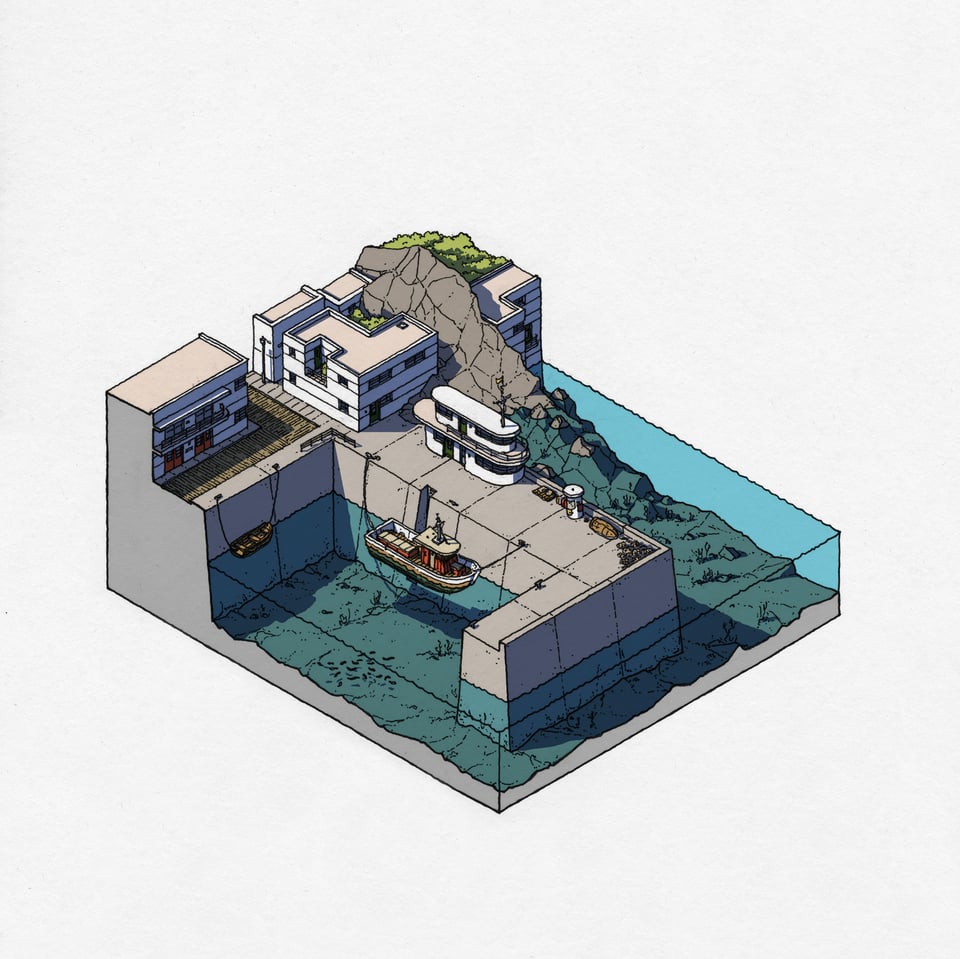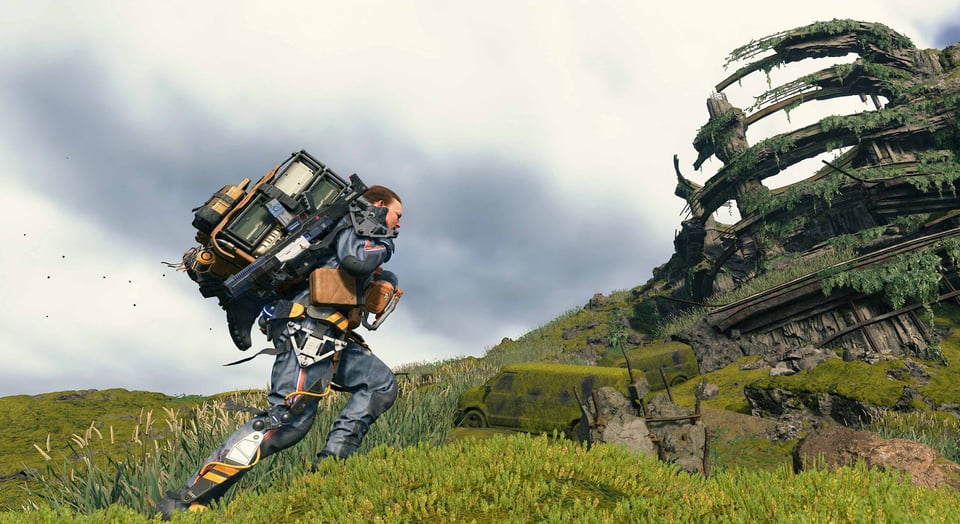Expedition 13
The Bathysphere
Hello and welcome to the thirteenth expedition of the Bathysphere. Fortunately, we are not superstitious or we would be concerned about clambering aboard an early 20th century submersible on such an auspiciously numbered journey. There is nothing unlucky about this week’s newsletter, however, which contains our new Guest Recommendations section and an essay about hiking in video games among other treats.
Please also consider taking up a paid subscription which will help us continue our voyage. It is £25 a year and you get access to our archive of previous expeditions.
Now join us as we descend!
The Bathysphere crew
Christian Donlan
Florence Smith Nicholls
Keith Stuart
Contact us at bathyspherecrew@gmail.com
Delightful games

I’m still reading The Other Side, Jennifer Higgie’s exploration of female art and other worlds, and I’ve just been going through a section about Ouija boards. These things still scare me a little, which is why I’m glad the board game Ghosts Can’t Draw exists, which replaces the board with a drawing surface you can wipe clean and gives each player images they have to create on its surface without seeing what they’re actually doing.
It’s ludicrous fun - so much so that I don’t think we’ve ever bothered with the game’s deeper rules. My daughter and I just pick cards and get drawing. It’s a phenomenal game. CD
Do you like maps? I like maps. If you too are cartographically inclined, then you might be interested in Route Scouts, a free game hosted on itch about mapping a secret route and sharing coded messages with a friend so they can try to recreate it. I haven’t tried it out yet but I appreciate the game encouraging players to engage with physical mapping and rethink how they represent the world around them. FSN
Interesting things

TikTok is great for discovering artists, and one of the first I encountered was Owen Pomery. I have several of his prints now, as well as his beautiful, melancholic book Victory Point. I wish Pomery made games, partly because I can’t imagine how that would work. His detailed, thin-lined architectural drawings capture a moment in perfect stillness and separation. I would love to see how he would make it move. CD
If you’re interested in interactive theatre, and live in the north of England, then I’d recommend checking out the BOX Northern Larp festival. The next one will be held in Leeds on February 14th 2026. If you fancy not just taking part in a larp but designing one yourself, BOX is also open to submissions until July 2. FSN
As a completely normal adult, I spend a lot of time scouring YouTube and other online sources for clips of early video game coverage. Recently, I discovered this treat on the BBC Archive – it’s from the ‘youth TV’ series Something Else which was broadcast on BBC2 from 1978-1982. It starts as a sort of awkward joke comparing the arcade game business to football, before going into a discussion about the emerging pro gaming scene. The archive has a whole section on old gaming reports and it’s well worth a browse. KS
Guest recommendations – Holly Gramazio (part one)
Holly is a game designer, event curator and best-selling author. Here is part one of her wonderful recommendations.
A non-fiction book: Bruno Munari's 1967 book Fantasy is so good on invention and creativity, why things are funny or strange or frightening, different modes of design and storytelling - and there's a new English translation that came out a few months ago! Munari worked across so many different areas of art and design - he made games and toys and sculptures and weird objects and paintings and mobiles and books, just to start - and his view of fantasy and how it functions and what it means to make imaginative work is so engaging. A really inspiring and wide-ranging read.
A novel: Let's go with Adolfo Bioy Casares' The Invention of Morel. It's a short novel from 1940 about a man on an island where everyone else seems to be stuck in a time loop. It's very satisfying - one of those novels where it starts out all mysterious and you think it's just going to be vibes, but as it goes on there's suddenly a story as well, and everything just works. It's great at setting its scene and carrying you along with the story and giving you an understanding of the weird mechanics of the island.
A museum or gallery: I'm gonna go for Kelvedon Hatch Secret Nuclear Bunker - it's great partly because it's a bit of a remote slog to get to so by the time you're there it's invested with specialness, but also because you get to see two layers of time really clearly; you get the bunker as it was originally intended and then you also get the people who've turned it into a museum without much budget or, possibly, museum experience, but who've come up with ways to explain what it was and why it was there - a kind-of double-layered storytelling.
A festival: A couple of weekends back I went to Voidspace Live, the second annual Voidspace festival, and it was so good! Basically it brings together people who are making live game-related and interactive work in a bunch of different modes - larp, jubensha, interactive installations, experimental arcade builds, live art, immersive theatre, anything in that sort of "be in a place and interact with a thing or a person or a ruleset" space. It's really wonderful to see people from these disparate fields getting together and comparing notes, and the festival is a great way to get to try out a bunch of different things. If you're near London and that sounds interesting to you at all then definitely keep an eye out for next year's event.
Essay: Landscapes and exertion in Death Stranding

A long time ago in the early noughties, I wrote a feature for the Official PlayStation magazine in which I posed as a freelance game designer and sent out a series of weird project ideas to a range of established studios. One of the ideas was a hiking simulator, inspired very much by my experiences walking the Yorkshire moors and Peak District national parks, in which players would simply explore a vast rural landscape, spotting wildlife, navigating by sight, taking rests to eat and drink, enjoying the views but also slipping down hillsides and accidentally dropping their rucksack in a stream. There were no challenges or tasks – just a wild place to ramble across. Of the several replies I received only one was positive; only one studio understood the value of such a peaceful yet quietly demanding game. The rest thought I was crazy.